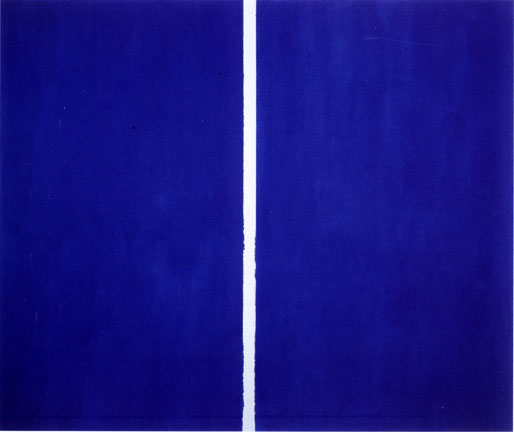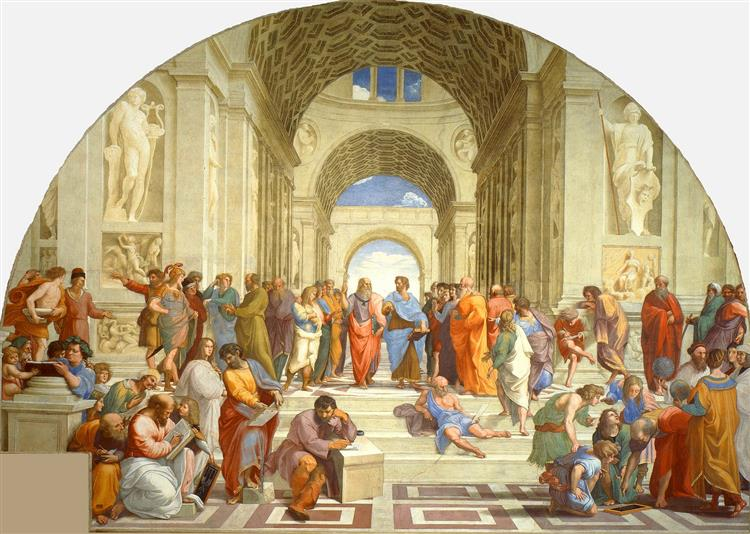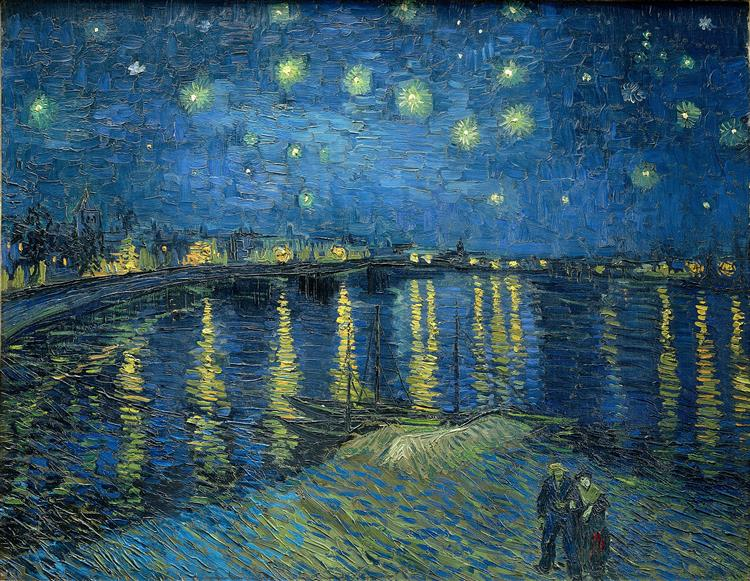“Beyond the Prompt: Our Opinion on Modern & AI ‘Art’”
- Abigail Handojo
- May 15
- 6 min read
Link to the audio recording: https://open.spotify.com/episode/0g2zomMXmrKBLvkKmMMvRz?si=yex_jlfwRPOI0IktgWFCCQ
Below is the loose script, complete with the art pieces we referenced in conversation
Podcast Title: The Write to Remain Vibrant
Episode Title: “Beyond the Prompt: Our Opinion on Modern & AI ‘Art’”
Hosts: Abigail Handojo and Katherine Theis
Episode Length: 35 minutes
Introduction: Art by Definition
Abigail: Welcome to an episode of “Beyond the Prompt: Our Opinion on Modern & AI ‘Art’”, our final project for Journalism class. We’re your hosts, Abigail Handojo (performance poet and former Commissioner of the Arts)
Katherine: and Katherine Theis (sketchbook artist and Art Appreciation student). Today, we’re talking everything modern art, AI-generated images, and how they differ from our favorite pieces from across art history.
Katherine: Let’s start with what we know: From cave paintings to cubism, art has evolved and changed alongside humanity for millennia.
The main eras of art throughout history include the Paleolithic, Egyptian, Greco-Roman Antiquity, Middle Ages, Renaissance, Baroque, Enlightenment, and Modernism periods, each defined by certain stylistic choices, subject matters, and purposes.
Abigail: Art, as defined by “Oxford Languages,” is the “expression of human creative skill and imagination…appreciated primarily for their beauty or emotional power.”
But… I’d define art simply as “human expression that evokes emotion.” Whether the medium be visual, musical, or literary.
Katherine: I see art in a similar way, and I personally define it as creative expression for a particular purpose.
Topic 1: Modern/Abstract Art
Katherine:
Explains the abstract expressionist movement
AKA abstract art
Period emerged after World War II
Affects of war
Nuclear war
Loss of family
Art movement as a result of a reaction/response to the war
“Total abstraction” no identifiable subject matter
Process > product
More for the artist than to be displayed
Abigail:
Art therapy as a type of Cognitive Processing Therapy
PTSD & mental illness after serving in a war
Art as an outlet for emotion
Katherine:
Introduces Onement VI
Onement VI - Barnett Newman
Sold for $43 million
Became popular after his prime
Katherine: A lot of people want these pieces, not because of the artistic value, but just to say they have it. It sort of comes off as pretentious. You’re buying this piece to say, “I can understand this blue square with a white line, but if you can’t that means you can’t understand art.”
Abigail: Arguably, many forms of art could be seen as “pretentious.”
You’re trying to get a leg up on someone else by saying you understand something or see something with more value than surface-level.
Katherine:
Introduces Blue Poles
Blue Poles - Jackson Pollock
Originally numbered “11”
The most well-known abstract expressionist
Popularized splatter art
Katherine: None of us really know what Jackson Pollock’s real purpose was for most of his artworks. Like Barnett Newman, he did it mainly for himself as a reaction/expression toward the war. Big proponent of process > result. This kind of painting is called action painting, where the painting in itself is an action.
Abigail: I can tell it’s probably what the artist created for themself. There’s definitely more texture and movement. When I picture art pieces, sometimes I think about what the artist must’ve looked like behind it, creating it. I don’t know the process of Onement. If you’re saying there’s a technique, I have no idea… maybe like a ruler? But for Blue Poles, I can imagine an artist violently splashing the paint on a canvas.
Katherine:
Introduces Campbell’s Soup Cans
Campbell’s Soup Cans - Andy Warhol
Group of prints
Pop art movement
Response to the 60s-70s rise in consumerism
*Search Andy Warhol’s Marilyn Monroe portfolio for reference
Katherine: People are debating whether this is a positive or negative statement towards consumerism. If you look at his Marilyn Monroe images, some believe it’s a statement on how celebrities have turned into products. That’s a pretty big difference from Renaissance art that people typically think of when they think of “art”.
Topic 2: AI-generated “Art”
Abigail: If you use our definition of art, then AI isn’t really creating art; it’s only generating images. AI depends on actual human artists’ work to feed into it and then generate something. It’s not even new, it’s just an amalgamation…
Katherine: …of stolen artwork. Which really sucks because people who do have that artstyle get very criticized because a lot of people think their art is AI. And now it’s becoming increasingly harder to tell if it’s real or if you used AI to make it.
Abigail:
Like a lesser Picasso, AI art adds arms where arms shouldn’t be and mutilates images in an odd, uncanny way.
^Katherine: at least Picasso had intention!
Since this type of technology is fairly new, the errors make it easy for human eyes to distinguish generation from creation.
However, the longer these programs are in use, the more practice AI will have and the fewer errors it will make.
Katherine: Just to play devil’s advocate, some people argue that the actual art of prompt-making is an art because you need some knowledge of artistic elements in order to create a good particular image.
Abigail: But isn’t that just like ghostwriting or commissioning? If I commission an artist to create something for me, that doesn’t make me the artist.
This lack of recognition is disheartening to see because, since [AI-generated art] is fairly new, the laws and rights in court when it comes to the copyright infringement and stealing of intellectual property it’s a debatable topic right now.
It’s hard because if AI art is stealing other artists’ work, who do we blame/prosecute in court? Is it the person who prompted it?
Katherine: Is it the AI itself?
Abigail: How do we hold AI accountable?
Possible solution: make sure programs are not stealing from artists
Responsible/limited use of AI
Support real artists!
Picrew
Gacha life
Commissions
The actual quality of AI art
Katherine: They have these plastic-y qualities where the lighting is very intense but doesn’t fully make sense within the room
Abigail: I know there are digital artists, but even this doesn’t look like it’s made by the human hand. It’s lacking the human touch that typical human-created art would have.
Art is a form of human expression utilizing the imagination, and since AI has virtually no emotion, how is it supposed to create something when it doesn’t know the feeling it’s trying to replicate?
Imagine visiting an art gallery with pieces missing a signature. They appear visually appealing on the surface, but lack depth. There’s no artist biography or attribution. There’s no person behind the work to praise, meet, get an autograph from, or follow on social media.
It’s such a big part of our culture to appreciate an artist, follow their works, and look at their process
Topic 3: Our Favorite Pieces
Katherine’s first pick:
School of Athens - Raphael
Stylistic choices of the Renaissance
Commissioned by the church to show philosophical figures from the Greco-Roman antiquity
Plato, Aristotle, and Hypatia
The importance of knowledge, focus on humanism, community & discussion
Abigail’s first pick:
Water Lilies - Claude Monet
Late 1800s Impressionist period
Use of optical color
*Search “blue black or white gold dress”
Katherine’s second pick:
Death of Sardanapalus - Eugene Delacroix
Romanticism - freedom of imagination and feeling
Dreams, horror, depths of the human mind
Myth of Sardanapalus’s death
*Search Saturn Devouring His Son by Francisco Goya AT OWN’S RISK, HIGHLY DISTURBING
(^La Croix Sparkling Water sponsor us)
Abigail’s second pick:
Irises - Vincent van Gogh
Post impressionism
Less concerned with optical color
Complementary colors (blue & orange)
Brushstroke style
^Search Van Gogh Immersive experience Las Vegas
Abigail:
Famous artists throughout history are not known for their work alone. Van Gogh’s mental illness and the mystery of his death add a layer of intrigue.
AI lacks the human condition that adds a layer/story behind the work of art.
Katherine’s third pick:
The Swing - John/Jean-Honore Fragonard
After renaissance, before romanticism
Rococo period 1740-1770
Gap in the French monarchy leads to a rise in aristocracy
Katherine:
Rococo began as an architectural movement (grand houses, gold, fancy, ornate decoration)
Paintings at that time period may bring formal, religious pieces to mind
Abigail’s third pick:
Starry Night Over the Rhone - Vincent van Gogh
^Correction: Starry Night Over the Rhone was created a year before Irises
Impasto style painting technique
Responds to quickly moving/progressing industrialized world
*Search Édouard Manet
*Search Starry Night - Vincent van Gogh
Metacognitive Reflection:
Katherine:
My choices explores the three prominent facets of humanity
Knowledge & wisdom
Horror & grotesqueness
Scandal & flirtatiousness
Detailed, refined
Abigail:
Mine were more nature-related
Water lilies on the water
Irises on a field
Body of water and the night sky
Looser, fever-dream
*Search The Night Cafe - Vincent Van Gogh
[Half of this episode is just about Vincent Van Gogh haha]
Outro:
Abigail:
Educated discussion & share opinions on art
Katherine’s knowledge taught
Well-needed conversation in a time of misuse of AI and lack of attribution
Recognize the artists and pieces that fulfill our definition
Katherine:
Human-made art is wonderful!
Emotions people have
Experiences transferred into canvas/page/other medium
SUPPORT YOUR ARTISTS! LOVE ART
Abigail:
It is important to acknowledge the artists of today who are fighting against this obstacle that is AI
Remember that humanity and art should be about the start, the process, and the story… not just the end result and not just the prompt.















Comments